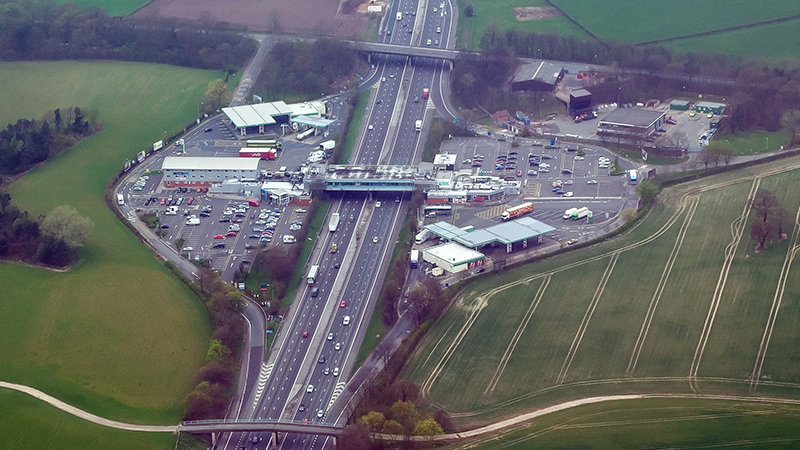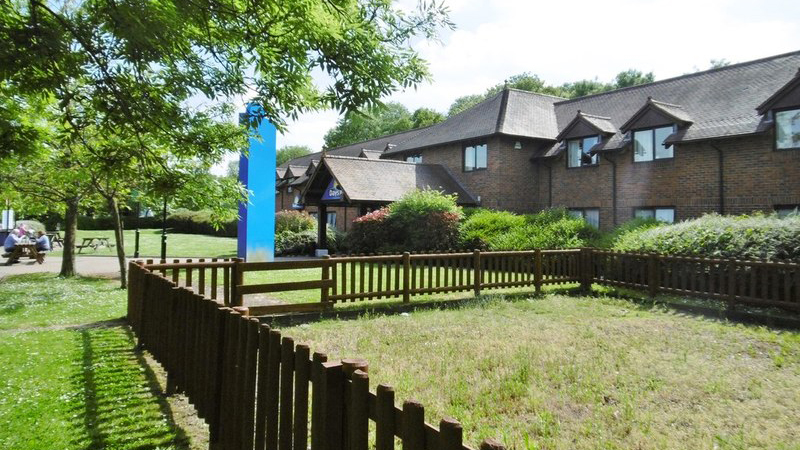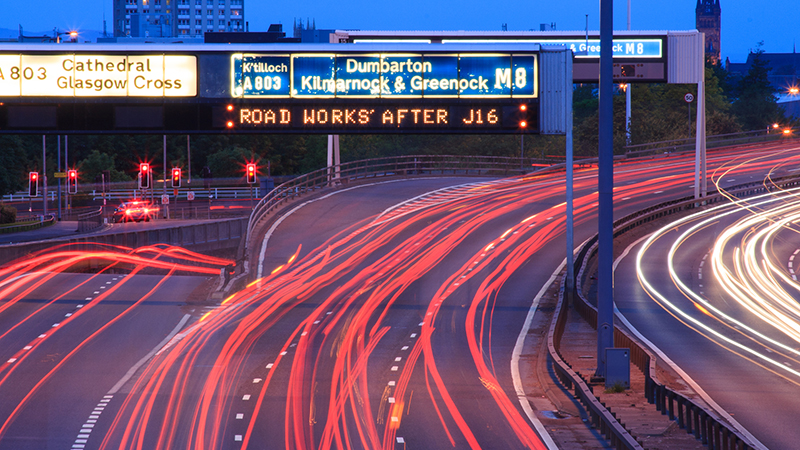Have you heard the one about the ‘secret’ motorway exits that drivers ‘in the know’ use to escape gridlocked carriageways? Find out the truth about these roads here.

Do these ‘secret’ motorway exits actually exist? Here’s all you need to know: Credit Thinkstock / nico_65
Variously known as ‘secret exits’, ‘rear access’, ‘secret access’ or ‘side exit’ roads, these entry and exit routes from the UK’s motorway system really do exist… but don’t confuse them with being unofficial motorway exits.
Here we have all the information you need to know about these roads that help keep our motorway network running…
Do ‘secret’ exits from motorways really exist and what are they for?
Yes – the majority of UK motorway service stations have them. However, they are certainly not to be regarded as an informal ‘exits’ from the UK’s motorway system.
Located at motorway service stations, the ‘secret’ exits are more often than not used as service roads for members of staff and deliveries to enter the facility from the local area. This helps avoid long detours caused by having to approach from the motorway itself. Emergency services also use them to reach incidents faster.
Is it legal to use ‘secret’ exits to get on or off the motorway?

The Knutsford Services, with its ‘secret’ exit that many motorists admit using: Image credit
These exits are often on private land, so illicit use could be prosecuted under trespass laws.Motorway service areas are also required to control access to these roads.
Here is a Freedom of Information request on the subject of whether or not use of these roads is permitted and what offence could be committed. See the original question to the Highways Agency (now Highways England). This is from 2014.
Motorway Service Operators are obliged to enter into sealed agreements with the Secretary of State in order to have signed access to the motorway network. These include a number of mandatory provisions. Amongst these are the requirement that use of the rear accesses to their sites must be confined to authorised vehicles only. This is necessary in order to prevent the service areas from becoming informal motorway junctions (with consequent disruption to the lives of those living and working on the approach roads) and to ensure the safety of legitimate users of the sites, especially pedestrians, who could be exposed to danger from through traffic travelling at speed.
Motorway Service Area accesses are private means of access not a public rights of way and must be controlled to restrict unauthorised access. As such the use of the rear access could be considered as trespass and public use of the access without prior agreement would be prohibited.
So, using these roads could attract a civil charge of trespass. This is said to be rare, however.
Do services with motels and hotels have these ‘secret’ access roads

Hotels, such as the Days Inn at Clacket Lane on the M25, are located only on one carriageway, but many can be accessed via the so-called ‘secret’ exits: Image credit
Many service stations have hotels and motels attached, which can often be located on one side of the carriageway. Some of these hotels use the rear access to help motorists reach their accommodation without a long diversion to a subsequent junction before having to retrace their route. This is not true of all venues, though.
Additionally, some motorway hotels and motels provide accommodation to customers who aren’t travelling on the trunk road. The ‘secret’ exits allow these guests to enter the hotel without having to use the motorway – especially useful for cyclists or those arriving on foot.
It’s often okay to use these ‘entries’ and ‘exits’ to and from the motorway network with permission from the hotel. Make sure you contact the hotel in question before attempting to use the access road or bridge.
Don’t confuse these ‘secret exits’ with the ones used by police and other services

Stick to official junctions and stay safe on the UK’s motorways: Credit Thinkstock/RyanDeanMorrison
Along with ‘secret’ exits from motorway service stations, there are also many slip roads used by emergency vehicles and amenity vehicles such as Traffic Officers and gritters. Do not even think about using these – it’s likely to be both dangerous and could land you with a fine.
How can I check the layout of motorway service stations on my route?
Most motorway service stations are covered by Google maps. Simply open maps, type in the name of the services and zoom in. This can be helpful if you’re looking for hotels etc while travelling on the motorway network – and legitimate ways to save time reaching accommodation that’s located on the opposite carriageway.
You can then look for any small roads connecting the service station with local streets and then, in many cases, you’ll be able to swap to Streetview to read local signage to see if there are restrictions in place.
Always follows signage and only use the roads if permitted to do so.
The example, above, shows the Hilton Park Services on the M6, where the Travelodge can be reached or exited using the small service road. Check out the Streetview option.
Do motorists use these roads to dodge traffic?
At service stations where access is left open, it is inevitable that many will use them in this way.
Please note: This article is intended to provide information on so-called ‘secret’ access roads from the UK motorway network. APH in no way encourages the use of them without the full permission of those responsible for their administration. Always adhere to local signage.
